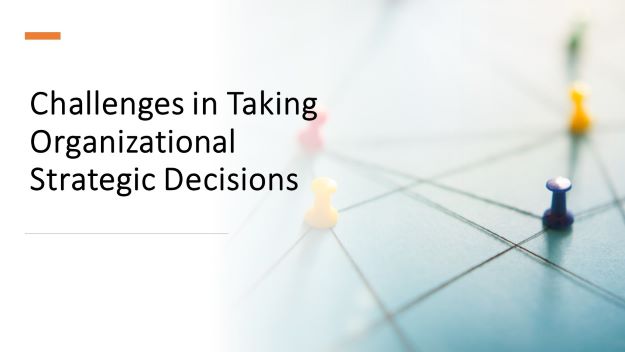Smart and healthy
It is crucial for leaders to make both smart and healthy organizational strategic decisions. According to a popular business author, smart and healthy people are equally important. Smart people often overshadow health and vice versa. An effective leadership team sets the tone for a healthy culture. Leaders should spend time together away from the day-to-day operations of the organization to get to know one another better. That time is essential for a healthy leadership team.
Strategic decisions are difficult to make because they involve high stakes and great uncertainty. In this environment, organizations are often slowed by the high volume of high-stakes decisions. They may postpone big-bet decisions, but delaying them can be costly and counterproductive. Simply waiting for the uncertainty to pass can be a decision in itself. Smart and healthy organizations use five principles to guide their decisions. While making decisions is never easy, these principles can help guide leaders and organizations in making the right decision.
Lack of reliable data
Bad data slows down an organization. Not only do decisions based on bad data turn out to be wrong, they also cost the organization time and money. In one Gartner study, companies that fail to use reliable data cost an average of $14.2 million a year. Moreover, it leads to a lack of data quality, a problem that affects all employees in the organization, from data scientists to managers.
Typically, decisions are based on key assumptions, or elements of data that are highly uncertain or prone to changing. For example, a competitor's launch in Europe may significantly alter a company's prospects. Yet, these assumptions are often based on small numbers of data, not a whole lot of information. So, it's not surprising that most decisions are based on a few key assumptions.
Executive responsibilities
The role of the executive is to make certain decisions for the organization. These decisions should improve the performance of the organization as a whole. There are four key strategies for optimizing the impact of strategic decision making. Among the strategies is re-allocating the executive responsibilities. This way, executives have a better understanding of current market conditions and consumer preferences. These strategies can help the organization achieve more success than ever before.
Flexibility
A key aspect of flexible decision-making is the ability to respond to changing external conditions. Strategic flexibility entails the ability to adapt quickly to external change and to evaluate alternative options and decisions. In this post, we examine the characteristics of strategic flexibility and its role in organizational decision-making. Adaptability can help a company to survive the changing world. Read on to learn more about the benefits of strategic flexibility and how it can help you make the right decisions.
One important characteristic of flexibility is the ability to change a system. It is similar to financial options in that it entails changes in a tangible system or investment. The term "option" refers to the right to change a system or investment. By building options into a system, managers can mitigate risks and capitalize on changing market conditions.
Creating a roadmap
A roadmap is an important management and communication tool for a business. Creating one is an effective way to clarify strategic goals, align teams and portfolios, and tie all of your work to the overall strategy. A good roadmap will also convey the duration of work items. Here are three ways to make your roadmap clear and compelling. Once you've created your roadmap, it's time to engage stakeholders and put it to work.
One of the biggest challenges executives face is balancing priorities. Without a roadmap, projects may be allocated too much resources or not enough resources. A roadmap will allow executives to evaluate new initiatives and projects strategically. It will also help them visualize trade-offs and balance priorities. It will also improve executive alignment and stakeholder buy-in. By creating and following a roadmap, you can ensure that your organization is achieving its goals.
How fast a decision is made and how good is that decision determines how far the business will thrive. |
Related reading:
#operationalexcellence #operationalexcellence #strategicdecisionmaking #strategy #strategymanagement #decisiontools #decisionmaking #strategicplanning #challengesofdecisionmaking #organizationalchange





















